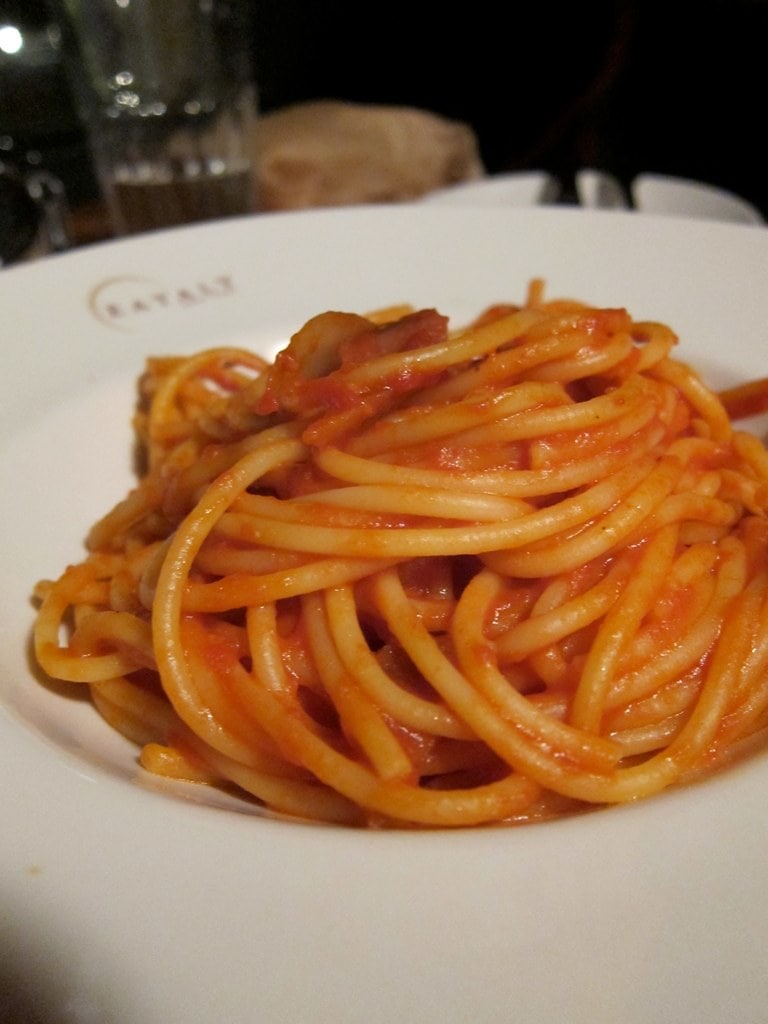
Food History of One of Italy’s Most Famous Pastas.
Pasta all’amatriciana is an iconic Italian pasta that’s loved in Italy and around the world. Learn the amatriciana history, where the dish came from, and how the recipe evolved over time.
Amatriciana History, A Timeline of its Origins
Origins
A classic amatriciana recipe includes pecorino, guanciale, and tomato sauce. That’s it.
But, it must be noted that the dish did not originally have tomato sauce.
At first, the pasta was known as pasta alla gricia, or griscia, as it came from the village of Grisciano where shepherds made their meal using pasta, guanciale, and pecorino. It was in the nearby town of Amatrice that tomato sauce was added in the late 1600s and the dish was officially named amatriciana.
Adding Tomatoes
In 1529, over a hundred years before tomatoes were added to the dish, Amatrice was burned to the ground by the Spanish. Survivors fled to the Kingdom of Naples.
Naples was one of the first cities to appreciate the tomato as a cooking ingredient. Prior to that, it was considered too acidic and even feared as poisonous.
Written Recipe
Centuries later a recipe for amatriciana was published in 1816 by Francesco Leonardi who cooked at the court of Pope Pius VII. Leonardi made the dish for a banquet in honor of Francis I, Emperor of Austria.
Making it Roman
Shepherds of Amatrice not only sold their sheep and dairy products in Rome, but they also influenced Romans with the delicious recipe of amatriciana. Today, Romans embrace the pasta as their own.
Some Roman recipes add onions. While modern versions include olive oil, garlic, and/or pancetta.
Cooking Notes
As for the pasta itself, the traditional Amatrice recipe calls for spaghetti, while bucatini is common in Rome. If you prefer short pasta, rigatoni is ideal for amatriciana.
Sign up for my newsletter on the sidebar for blog updates and my travel insider tips! And, check out my vlogs on YouTube!


